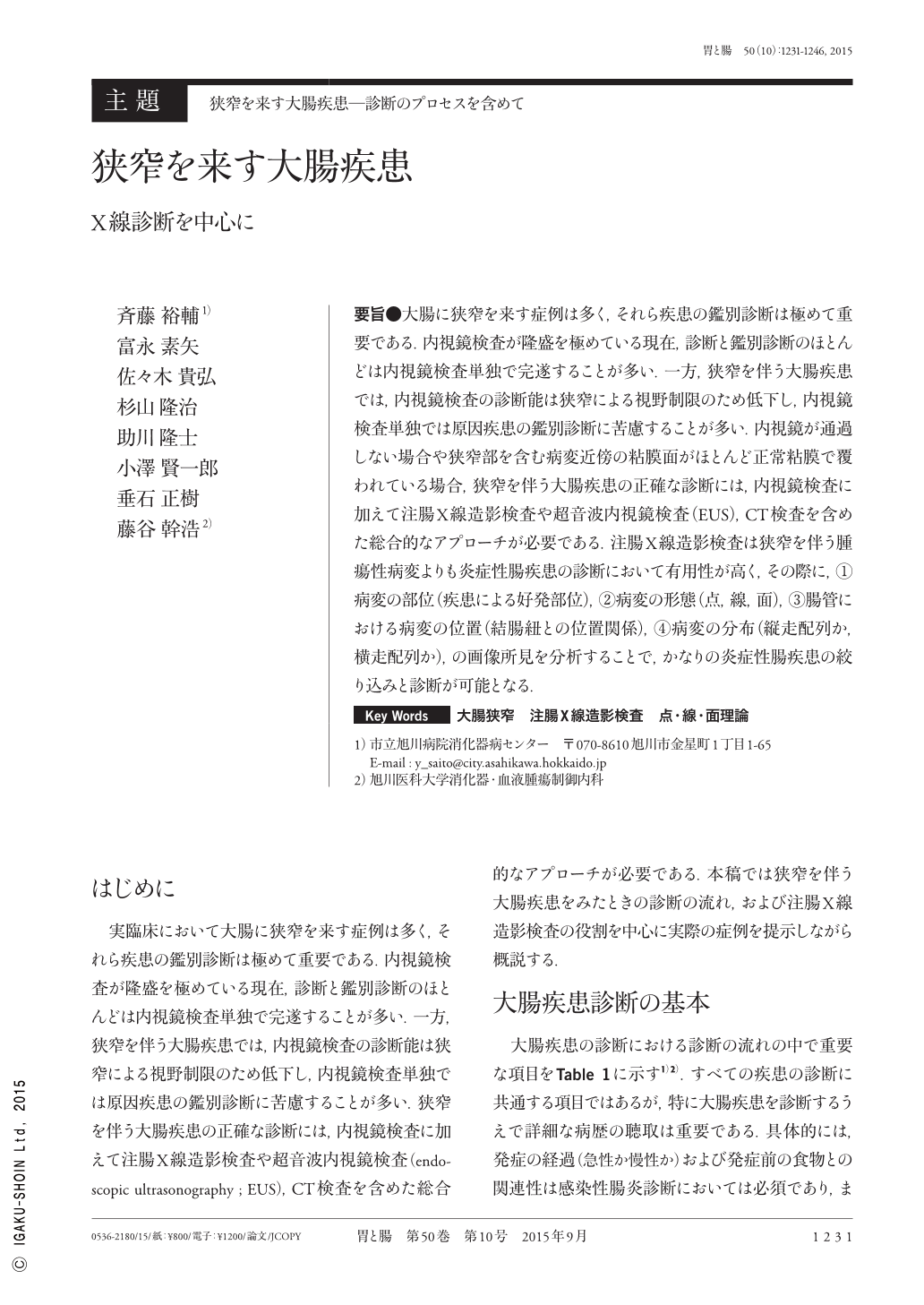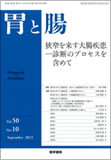Japanese
English
- 有料閲覧
- Abstract 文献概要
- 1ページ目 Look Inside
- 参考文献 Reference
- サイト内被引用 Cited by
要旨●大腸に狭窄を来す症例は多く,それら疾患の鑑別診断は極めて重要である.内視鏡検査が隆盛を極めている現在,診断と鑑別診断のほとんどは内視鏡検査単独で完遂することが多い.一方,狭窄を伴う大腸疾患では,内視鏡検査の診断能は狭窄による視野制限のため低下し,内視鏡検査単独では原因疾患の鑑別診断に苦慮することが多い.内視鏡が通過しない場合や狭窄部を含む病変近傍の粘膜面がほとんど正常粘膜で覆われている場合,狭窄を伴う大腸疾患の正確な診断には,内視鏡検査に加えて注腸X線造影検査や超音波内視鏡検査(EUS),CT検査を含めた総合的なアプローチが必要である.注腸X線造影検査は狭窄を伴う腫瘍性病変よりも炎症性腸疾患の診断において有用性が高く,その際に,(1)病変の部位(疾患による好発部位),(2)病変の形態(点,線,面),(3)腸管における病変の位置(結腸紐との位置関係),(4)病変の分布(縦走配列か,横走配列か),の画像所見を分析することで,かなりの炎症性腸疾患の絞り込みと診断が可能となる.
There are many colorectal diseases with stricture formation, and their diagnosis is of great importance. Currently, endoscopy is a popular diagnostic approach, and most colorectal diseases can be diagnosed by colonoscopy alone. However, it is sometimes difficult to diagnose colorectal disease with stricture formation by only colonoscopy because of the limitation of the visual field by a colonic stricture. In cases when scope passage is impossible because of a stricture or when a stricture is covered with normal mucosa, additional use of a barium enema study, endoscopic ultrasonography, or a computed tomography scan will be useful in order to accurately diagnose colorectal disease with stricture formation. A barium enema study is more useful for the diagnosis of inflammatory disease than of a tumor. The important factors that should be analyzed are as follows:(1)the site of the lesions(frequent site in each disease)(2)the shape of the lesions(point, line, and area),(3)the location of the lesions in the lumen(correlation with the tenia), and(4)the distribution of the lesions in the lumen(longitudinal or circular arrangement). Analysis of these factors will allow accurate diagnosis of most inflammatory diseases of the colon.

Copyright © 2015, Igaku-Shoin Ltd. All rights reserved.


